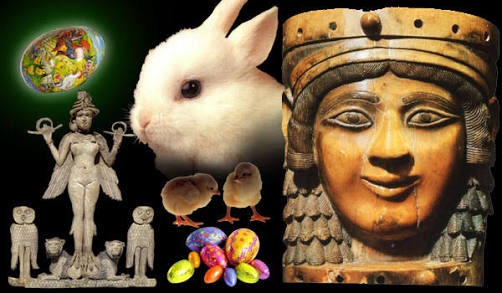
Is Easter Christian? The simple answer is “no.” Despite all its beauty and pageantry, Easter is pagan to the core. It’s symbols and traditions do not honor Christ or His sacrifice. On the contrary, they actually mock it. The apostle Paul, in his epistle to the Galatians, issued a stern warning which every true Christian should take very seriously.
“Be not deceived; God is not mocked: for whatsoever a man soweth, that shall he also reap.” (Gal. 6:7).
The God of the Bible takes very seriously the way He is worshiped. Those who believe it is ok to borrow from the traditions of the pagan world and incorporate such things into the worship of God or His Son should consider Jesus’ admonition on this subject: “God is a spirit and those who worship Him must worship Him in spirit and in truth” (Jn. 4:24). It is important to understand that nowhere in the New Testament do we find God’s Church celebrating Easter. God’s people throughout the Bible honored His festivals.
The New Testament Church kept the Passover and the Days of Unleavened Bread (1 Cor. 5:7). They also kept His other festivals which God commanded as holy convocations (Lev. 23:1-2). God’s Holy Days were never abandoned at the cross. On the contrary, they take on greater meaning. Man’s attempt to replace God’s festivals and Holy Days with customs that come directly from the pagan world represents an act of rank arrogance.
Every year, millions of professing Christians around the world participate in a celebration they believe honors the resurrection of Jesus Christ. This celebration is called Easter and it is arguably the most important observance in modern Christianity.
But when did this day originate? And from where did it come? What about its symbols and customs? Are they mentioned in the Bible? Why is Easter celebrated at sunrise? What is the origin of the Easter egg? What about bunnies? What do these symbols have to do with the resurrection of Jesus Christ? What about the traditional foods such as Easter ham or hot cross buns? Why is it called “Easter”? Is this term mentioned in the Bible and what does it mean? Is there a story behind this “most holy” time of the year? Does the God of the Bible respect this observance? This booklet examines the tradition of Easter in light of the historical record and the scriptures. What you read in these pages may surprise you. It might even shock you, but the words are incontrovertible. They express without apology the truth about Easter.
The Origin of Easter
Although most professing Christians believe Easter celebrates the resurrection of Jesus Christ, its roots can be traced to ancient civilizations that existed long before Jesus’ birth, let alone His death and resurrection. The ancient civilizations of Assyria, Babylon, Egypt, and Greece as well as that of Rome itself all embraced religious rites that greatly resemble the holiday we call Easter.
The term Easter does not come from the Bible, but rather from the name of an ancient goddess of spring. Consider the words of Compton’s Pictured Encyclopedia:
“The name Easter comes from the ancient Anglo-Saxon goddess of spring. Eostre or Ostara, in whose honor an annual spring festival was held. Some of our Easter customs have come from this and other pre-Christian spring festivals.” (Vol. 4, p. 140)
The famous historian Alexander Hislop clearly indicates that the term “Easter” is not Christian, but rather Chaldean in origin:
“It is not a Christian name. It bears its Chaldean origin on its very forehead. Easter is nothing else than Astarte, one of the titles of Beltis, the queen of heaven, whose name, as pronounced by the people of Nineveh, was evidently identical with that now in common use in this country. That name, as found by Layard on the Assyrian monuments, is Ishtar.” (The Two Babylons, Hislop, p.103)
The connection between Easter and the celebration of the goddess of spring is undeniable. Other highly credible reference works acknowledge that the roots of Easter are deeply woven into the pagan world. Consider the words of Funk and Wagnalls Standard Reference Encyclopedia:
“Easter embodies traditions of an ancient time antedating the rise of Christianity. The origin of its name is lost in the dim past; some scholars believe it probably is derived from Eostre, the Anglo-Saxon name of a Teutonic goddess of spring and fertility.” (Vol. 8, p. 2940)
Tragically, despite having its roots in paganism, Easter was a festival later professing Christian leaders came to embrace as their own. According to Grolier’s Encyclopedia, the leaders of the church became more than willing to adopt ancient pagan customs into their worship.
The name of this holiday and the time it is celebrated have led people to believe that an earlier holiday existed on this day before the Christian observance. For many ancient nations joyously celebrated the end of winter and the resurrection of the sun at this season of the year; and some devoted this festival to Eostre, Germanic goddess of spring. The church fathers turned this heathen holiday into the Christian celebration of the resurrection. (1966, Vol. 17)
Many believe that these “church fathers” embraced the symbols of Easter for strategic reasons. In essence, these religious leaders believed the only way they could persuade the pagan world to accept Christianity was by adopting many of the rituals these new “converts” held dear. Consider the words of Reader’s Digest:
“By a stroke of tactical genius, the church, while intolerant of pagan beliefs, was able to harness the powerful emotions generated by pagan worship. Often, churches were sited where temples had stood before, and many heathen festivals were added to the Christians calendar. Easter, for instance, a time of sacrifice and rebirth in the Christian year, takes its name from the Norse goddess Eostre, in whose honour rites where held every spring. She in turn was simply a northern version of the Phoenician earth-mother Astarte, goddess of fertility.” (The Last Two Million Years by the Reader’s Digest Association, 1981, p. 215)
In essence, Christianity has proclaimed as “holy” that which the Bible declares “profane.” God once issued a scathing indictment against the priests of Israel because they did the very same thing. Consider the words of the prophet Ezekiel:
“Her priests have violated My law, and have profaned Mine holy things: they have put no difference between the holy and profane, neither have they shewed difference between the unclean and the clean, and have hid their eyes from My sabbaths, and I am profaned among them. (Ezek. 22:26)
These words should stand as a powerful reminder that God takes very seriously the way in which He is worshiped. When man takes upon himself the right to determine how he will honor God, he assumes a right that he does not have. God alone will determine what honors or dishonors Him.
Throughout the Bible, God specifically outlines the terms and conditions of His worship. Still, man believes that he has a better way and as a result, has created symbols that define a faith that is abhorrent to God and is condemned in the scriptures.
An Ancient Easter Celebration
Today, Easter is regarded as the chief of Christian holidays. However, it is anything but Christian. Many ancient civilizations celebrated festivals centering around the death and resurrection of a man-god. In Assyria, it was Semeramis and Ninus. In Babylon, it was Ishtar and Tammuz. In Syria, it was Astarte and Baal. In Greece, it was Aphrodite and Adonis.
The Interpreter’s Dictionary provides some very interesting insight concerning how ancient civilizations embraced a belief strangely familiar to that of Easter:
“The oldest common feature of the religions of the ancient Near East was the worship of a great mother goddess, the personification of fertility. Associated with her, usually as a consort, was a young god who died and came to life again, like the vegetation which quickly withers but blooms again… His absence produced infertility of the earth, of man, and of beast. His consort mourned and searched for him. His return brought renewed fertility and rejoicing. In Mesopotamia, the divine couple appear as Ishtar and Tammuz, in Egypt, as Isis and Osiris.” (Vol. 2, p. 265)
An Ancient Egyptian Easter
Consider the Easter story as it originated in Egypt. According to tradition, the goddess Isis was married to her brother Osiris. Osiris was killed and pieces of his body were scattered over the land of Egypt. When Isis received word of the death of her brother-husband, she set out on a journey to retrieve the pieces. Once she found them, Isis began casting spells in an attempt to bring Osiris back to life. According to the legend, she partly succeeded and appealed for one last night with Osiris. During that evening, she conceived a son named Horus; however, Osiris departed to take his place in the heavens along with his father, Ra, the sun god.
Tradition holds that Osiris was raised from the dead and ascended to heaven during the time of the vernal (spring) equinox. It was at this time that the death and resurrection of pagan gods were claimed to have taken place.
This is only one of several legends concerning the resurrection of a man who had joined the ranks of the gods but it stands as a model which has been used throughout the Christian world. Tragically, such Pagan myths cloud the truly miraculous story of the resurrection of Jesus Christ, especially when their symbols and customs are promoted by professing Christian ministers and their churches.
Easter – It’s Symbols and Customs
The symbols and customs of Easter convey powerful images of this holiday. Consider the Easter egg, bunnies, hot cross buns and sunrise services, just to name a few. These symbols stand as a constant reminder of the Easter season.
Throughout history, religions have used symbols and traditions as a means by which to perpetuate their beliefs. Symbols are designed to add both meaning and appeal to seasons and events. The symbols associated with Easter have great appeal to this holiday’s celebrants.
However, after careful examination of these symbols and traditions, a much different picture emerges. As unbelievable as it may seem, these symbols can be traced to the pagan world and were used extensively in the worship of false gods. Consider the words of Compton’s Encyclopedia:
“Many Easter customs come from the Old World… colored eggs and rabbits have come from pagan antiquity as symbols of new life… Our name “Easter” comes from Eostre, an ancient Anglo-Saxon goddess, originally of the dawn.” (Vol. 4)
The symbols of Easter, as appealing as they may be, have nothing to do with the resurrection of Jesus Christ but rather find their roots in religions that reject the God of the Bible. Consider the following symbols associated with the celebration of Easter.
The Easter Egg
One of the most prominent symbols associated with Easter is the egg. Every year, unsuspecting children are taught to decorate this symbol with bright colors and designs. Sometimes, the eggs are hidden and everyone is encouraged to seek out these “treasures” and place them in baskets. Even the White House hosts an annual Easter egg hunt. But from where did this custom originate? And what does it have to do with the resurrection of Jesus Christ? It is important to understand that Easter eggs have absolutely nothing to do with biblical Christianity but rather trace their origin to the pagan world. This fact is confirmed by the Encyclopedia Britannica:
“..at Easter, popular customs reflect many ancient pagan survivals connected with spring fertility rites, such as the symbols of the Easter egg and the Easter hare or rabbit.” (Vo. IV, p. 605)
The Encyclopedia of Religion states that the Easter egg was used prominently in pagan fertility rites:
“… the egg is a powerful symbol of fertility, purity and rebirth. It is used in magical rituals to promote fertility and restore virility; to look into the future, to bring good weather; to encourage the growth of crops and to protect both cattle and children against misfortune. All over the world it represents life and creation, fertility and resurrection… (and) was linked with Easter.” (1987, p. 37)
The egg has been a sacred symbol to numerous pagan civilizations and was used prolifically in religious ceremonies in Egypt. Alexander Hislop, in his book The Two Babylons, relates an interesting chronicle of its use in religious practices.
From Egypt these sacred eggs can be distinctly traced to the banks of the Euphrates. The classic poets are full of the fable of the mystic egg of the Babylonians; and thus its tale is told by Hyginus, the Egyptian, the learned keeper of the Palatine Library at Rome, in the time of Augustus, who was skilled in all the wisdom of his native country: “An egg of wondrous size is said to have fallen from heaven into the river Euphrates. The fishes rolled it to the bank, where the doves having settled upon it, hatched it, and out came Venus, who afterwards was called the Syrian Goddess” (Astarte). (p. 109)
In addition to its use in the religious ceremonies in Egypt, the egg was also a powerful religious symbol throughout Asia and Europe:
“The mystic egg of Babylon, hatching the Venus Ishtar, fell from heaven to the Euphrates. Dyed eggs were sacred Easter offerings in Egypt, as they are still in China and Europe. Easter, or spring, was the season of birth, terrestrial and celestial.” (Egyptian Belief and Modern Thought, pp. 211-212).
Tragically, despite knowing of its pagan origin, the church at Rome willingly adopted the egg as its own symbol of the resurrection:
“The church did not oppose this, though many egg customs were pre-Christian in origin, because the egg provided a fresh and powerful symbol of the resurrection and the transformation of death into life.” (The Encyclopedia of Religion, 1987, p. 37)
Hislop, in his work The Two Babylons, explains that it was the normal practice of the Catholic church to integrate paganism into its liturgy. This was done to attract pagan converts:
“To conciliate the pagans to nominal Christianity, Rome, pursuing its usual policy, took measures to get the Christian and Pagan festivals amalgamated, and, by a complicated but skillful adjustment of the calendar, it was found no difficult matter, in general, to get Paganism and Christianity – now sunk far in idolatry – in this as in so many other things, to shake hands.” (p. 105)
It is clear that the church of Rome did not find it difficult to embrace pagan practices and integrate them into their own worship. But God warns against such a practice. The great prophet Jeremiah wrote, “Learn not the way of the heathen” (Jer. 10:2). Even Jesus warned that it was possible to worship God in vain:
“In vain do they worship Me, seeking after doctrines the commandments of men.”(Mk. 7:7)
Jesus went on to say, “You make the law of God of none effect through your tradition” (Mt. 15:6). The point to this is that God never instructed man to gather eggs and decorate them. As fun as this activity may be to children and parents alike, its origins are pagan and this God hates.
The Easter Bunny
The bunny is one of the most cherished symbols of Easter. These cuddly creatures are included in numerous bedtime stories and have endeared themselves to children around the world. But how did the bunny become such an integral part of a holiday designed to celebrate the resurrection of the Savior of the world? This question is answered reluctantly by the Catholic Encyclopedia:
“The custom may have its origin in paganism, for a great many pagan customs, celebrating the return of spring (and therefore directly related to SUN-worship), gravitated to Easter. The egg is the emblem of the germinating life of early spring… the Easter rabbit lays the eggs, for which reason they are hidden in a nest or in the garden. The rabbit is a pagan symbol and has always been an emblem of fertility.” ( p. 227)
Other credible sources openly acknowledge that the Easter bunny has absolutely nothing to do with Christianity but rather the pagan world. That world worshiped fertility and rebirth and the rabbit played a critical part in this worship:
“The Easter bunny had its origins in pre-Christian fertility lore. Hares and rabbits were the most fertile animals our forefathers knew, serving as symbols of abundant new life in the spring season.” (Handbook of Christian Feasts and Customs, 1958, p. 233-6)
The Encyclopedia Britannica indicates that the bunny was associated with the beginning of life and was a symbol of fertility.
Like the Easter egg, the Easter hare came to Christianity from antiquity. The hare is associated with the moon in the legends of ancient Egypt and other peoples… The hare came to be associated with… the beginning of new life in both the young man and young woman, and so is a symbol of fertility and the renewal of life. (“Easter Bunny”)
According to Reader’s Digest, the rabbit has been depicted in Christian art as representing fertility and lust because they are so prolific:
Children’s stories in many countries tell how Easter eggs are brought not by a chicken but by hares and rabbits. These long-eared hopping mammals have represented fertility in many cultures because they breed so quickly. In traditional Christian art the hare represents lust, and paintings sometimes show a hare at the Virgin Mary’s feet to signify her triumph over temptations of the flesh. Yet as a symbol of life reawakening in the spring – often portrayed as the innocent and cuddly Easter bunny – the rabbit co-exists in many places with the solemn Christian rites of Easter. (Readers’ Digest Book of Facts, 1987, p. 122).
It is interesting to note that rabbits do not lay eggs. This fact escapes children because they are misled by adults more committed to perpetuating a tradition than to teaching God’s truth.
Hot Cross Buns
Hot cross buns have been a long-standing tradition during the Easter season. But from where did this tradition originate? According to Alexander Hislop, this traditional food is also inextricably linked to the pagan world:
“The hot cross buns of Good Friday, and the dyed eggs of Pasch or Easter Sunday, figured in the Chaldean (Babylonian) rites just as they do now. The “buns” known too by that identical name, were used in the worship of the queen of heaven, the goddess Easter, as early as the days of Cecrops, the founder of Athens – that is, 1500 years before the Christian era. One species of sacred bread which used to be offered to the gods, was of great antiquity, and called Boun.” (Hislop, The Two Babylons, p. 108).
Hislop later explains that the sign of the cross placed on these pastries has nothing to do with Christianity or the resurrection but rather was prominent in the Babylonian Mysteries:
“…the so-called “sign of the cross” and the worship bestowed on it, never came from Jesus or His apostles. The same sign of the cross that Rome now worships was used in the Babylonian Mysteries… That which is now called the Christian Cross was originally no Christian emblem at all, but was the mystic Tau of the Chaldeans and Egyptians.” (ibid, p. 199-200)
The great prophet Jeremiah was inspired to write a scathing indictment against the nation of Judah. In this indictment, God warned His people that their ongoing practice of pagan rites would not go unpunished. Notice these abominations included the making of this special bread to the queen of heaven:
“Seest thou not what they do in the cities of Judah and in the streets of Jerusalem? The children gather wood, and the fathers kindle the fire, and the women knead their dough, to make cakes to the queen of heaven, and to pour out drink offerings unto other gods, that they may provoke Me to anger. Do they provoke Me to anger? saith the Lord: do they not provoke themselves to the confusion of their own faces? Therefore, thus saith the Lord God; Behold, Mine anger and My fury shall be poured out upon this place, upon man, and upon beast, and upon the trees of the field, and upon the fruit of the ground; and it shall burn, and shall not be quenched.” (Jeremiah 7:17-20)
With these words, God is declaring that He is serious about idolatry. No matter how well intended this practice may seem, God condemns it.
The Easter Lily
One of the most prominent symbols associated with Easter is the lily. This beautiful flower adorns the altars of virtually thousands of Christian churches every Easter. But what does this symbol have to do with the resurrection of Jesus Christ and when did the custom of using this flower as an ornament of faith originate? As surprising as it may seem, this too has its roots in the pagan world. According to Grolier’s Encyclopedia, the Easter lily is a symbol of spring, when everything becomes new:
“On Easter people go to church services and delight in the sight of great masses of Easter lilies that decorate the altars. For the Chinese the peony is the king of flowers and symbol of spring. But to the people in church on Easter Day, the fragrant lily with its trumpet shaped blossoms is the symbol of purity and the welcome harbinger of spring.” (1966, Vol. 17)
But from where did this symbol come and when was it embraced as a symbol of worship? Unger’s Bible Dictionary provides some extraordinary insight concerning this question. It characterizes this symbol as typical of that which was embraced by pagan worshipers in the Canaanite world:
“Characteristically Canaanite, the lily symbolizes grace and sex appeal and the serpent fecundity.” (p. 412).
It is important to understand that this flower has no place in the worship of the risen Christ. It was borrowed from the pagan world. Despite its beauty, it is a symbol embraced by a God-rejecting culture and its image of sex and fertility have no place in the worship of the Savior of the world.
Sunrise Service
One of the most common practices associated with Easter is the sunrise service. Every year, millions of professing Christians come together before sunrise and participate in what they believe is the worship of the risen Christ. Generally, Easter sunrise services are filled with great pageantry and drama. Choirs provide beautiful music declaring “He is risen” while ministers give moving messages about the atoning sacrifice of Jesus Christ. To many, sunrise services are regarded as a religious experience and many well-intended Christians find participation in these services inspiring.
Most believe the Easter sunrise service has its origin in the scriptures. The common belief is that Jesus was risen before dawn on “Easter Sunday.” This, however, is not true as will be explained later in this booklet. Further, it is important to understand that nowhere in the scriptures are Christians instructed to worship at sunrise in celebration of the risen Christ. However, the Bible does describe an event in which 25 men turned their back towards God’s temple and worshiped the sunrise. God called this act of sun worship an abomination that would be dealt with in His fury:
“He said also unto me, Turn thee yet again, and thou shalt see greater abominations that they do. Then he brought me to the door of the gate of the Lord’s house which was toward the north; and behold, there sat women weeping for Tammuz. Then said he unto me, Hast thou seen this, O son of man? Turn thee yet again, and thou shalt see greater abominations than these. And he brought me into the inner court of the Lord’s house, and behold, at the door of the temple of the Lord, between the porch and the altar, were about five and twenty men, with their backs toward the temple of the Lord, and their faces toward the east; and they worshipped the sun toward the east. Then he said unto me, Hast thou seen this, O son of man? Is it a light thing to the house of Judah that they commit the abominations which they commit here? For they have filled the land with violence, and have returned to provoke me to anger: and lo, they put the branch to their nose. Therefore will I also deal in fury: mine eye shall not spare, neither will I have pity: and though they cry in mine ears with a loud voice, yet will I not hear them.” (Ezk. 8:13-18)
The Third Day
The most common belief concerning Easter centers around the day of Jesus’ crucifixion and that of His resurrection. The popular view is that Jesus was crucified on “Good Friday” and rose on “Easter Sunday” at dawn. Virtually all major Protestant denominations as well as the Catholic church embrace this belief. But is it the truth? Or, is this just another fable that has gone unchecked by millions of professing Christians?
The Only Sign…
The gospel of Matthew describes an event in which Jesus was challenged by the religious leaders of His day to give a sign that would prove He was the Messiah.
Then certain of the scribes and of the Pharisees answered, saying, Master, we would see a sign from thee. (Mt. 12:38)
Jesus responded to these religious leaders by providing the only sign He said would be given:
“But he answered and said unto them, An evil and adulterous generation seeketh after a sign; and there shall no sign be given to it, but the sign of the prophet Jonas: For as Jonas was three days and three nights in the whale’s belly; so shall the Son of man be three days and three nights in the heart of the earth.” (Mt. 12:39-40)
Notice that Jesus Himself clearly stated that the only sign He would give to prove He was the promised Messiah was that He would be in the grave “three days and three nights.” With this understanding, how could Jesus have been crucified on “Good Friday” and resurrected on “Easter Sunday”? It is virtually impossible to get three days and three nights between Friday afternoon and Sunday at dawn.
Furthermore, how could Jesus have been raised at sunrise when He died near sunset? Once again, if Jesus was buried toward the end of the day as virtually all authorities admit, and He was in the grave three days and three nights, then He would have risen toward the end of the day, 72 hours, or three days later. Otherwise, His words are false and He is not the Messiah.
If Jesus’ words are true, then the vast majority of professing Christians are worshiping Him in vain because He was not resurrected early Easter Sunday as so many believe. Some argue that the Bible says Jesus was raised Sunday morning before daylight. This is based on the gospels’ account of certain women visiting Jesus’ tomb “early on the first day of the week” (Mk. 16:1-4). However, when they arrived, the tomb was empty. They were then informed by an angel, “He is risen” (Mk. 16:6). Notice, however, the angel did not say when Jesus rose, only that He had risen. Consider for a moment: if the women had not visited the tomb until Monday or Tuesday, the angel’s declaration would have been no different: “He is risen.” This angelic being is only announcing what has taken place, not when it took place. Remember Jesus Himself already said how long He would be in the grave: “three days and three nights,” exactly 72 hours (Mt. 12:40).
Three Days and Three Nights Not an Idiom
There are some who contend that Jesus’ words in Matthew 12:40 are a Hebrew idiom and can mean “any part of a day.” Therefore, a late Friday burial and an early Sunday resurrection would be consistent with the scriptures. However, this argument is simply not true.
Although the Bible does contain idiomatic phrases, this is not one. Virtually all credible scholars acknowledge that when the number of nights is included as well as the number of days, it is no longer an idiom but a statement of fact. Consider the words of E. W. Bullinger:
“The fact that “three days” is used by Hebrew idiom for any part of three days and three nights is not disputed; because that was the common way of reckoning… But, when the number of “nights” is stated as well as the number of “days,” then the expression ceases to be an idiom, and becomes a literal statement of fact.” (The Companion Bible, Appendix 144)
The plain truth is that Jesus was never crucified on “Good Friday” and resurrected on “Easter Sunday.” This belief is not driven by the scriptures but rather by the traditions of men.
When Was Jesus Crucified?
Every year, millions of Christians honor the crucifixion of Jesus Christ on what has come to be known as “Good Friday.” On this day, many cultures actually re-enact the crucifixion. But how could Jesus have been crucified on a Friday when the scriptures declare he was resurrected before the women visited His tomb Sunday morning? Remember Jesus’ own words that state how long He would be in the grave. “For as Jonas was three days and three nights in the whale’s belly; so shall the Son of man be three days and three nights in the heart of the earth”. (Mt. 12:39-40).
The following verses will serve to show that Jesus died on the Passover. It states in Mark (15:42-45) that on the evening of the preparation day, which is the day before the Sabbath, Joseph a counseller asked for the body of Jesus. Once Pilate determined Jesus was dead, he gave him the body.
Mark (15:42) And now when the even was come, because it was the preparation day, that is, the day before the Sabbath,
(43) Joseph of Aarimathaea, an honourable counseller, which also waited for the kingdom of God, came, and went in boldly unto Pilate, and craved the body of Jesus.
The above scriptures are where the problem lied with the early church trying to interpret the events of the bible. One should take note, that what the majority of modern day Christians practice or follow come directly from the Roman Catholic Church. You had non spiritual people trying to decipher events that were spiritual. Since the scriptures stated, that the preparation day, was the day before the Sabbath, they automatically assumed this event took place on a Friday, because they knew the Lord’s Sabbath was from Friday evening to Saturday evening. That is how they came up with the concept that Jesus died on Friday and He rose early Sunday morning.
What they failed to take into account were the Lord’s Holy Days or as they are also called High Sabbaths. There are seven yearly Sabbaths, and they, with the exception of Pentecost, can fall on any day of the week.
At the beginning of this lesson, it was explained in Leviticus (23:4) that the Passover which is the 14th of the month, is the day before the feast of Unleavened Bread, which is a Holy Day or A High Sabbath. The Passover is sometimes referred as the preparation day because they used this day to prepare for the feast. The Feast of Unleavened Bread is the Sabbath which was being refereed to in Mark 15:42) when it was stated that Joseph craved the body of Jesus. Jesus had been crucified on the Passover and the next day was the Feast of Unleavened Bread.
Jesus foretold when His death would occur.
Matthew 26:1) And it came to pass, when Jesus had finished all these sayings, he said unto his disciples,
(2) Ye know that after two days is the feast of the passover, and the Son of man is betrayed to be
crucified.
Now remember God’s days start at evening and end the next evening. Keep that in mind as you view the next set of scriptures. Jesus had been betrayed by Judas the evening of the Passover. John 13 tells how Jesus and His disciples, that evening, were sharing the Passover meal. John (18:3) shows that same evening; Jesus was betrayed and taken away. It was still nighttime when they took Jesus, because the men that came and took and bound Him had lanterns and torches.
Jesus was crucified the next day but it was still the Passover. Remember God’s days run from sundown to sundown. Jesus had been taken into custody the night of the Passover and the next morning which is the day of the Passover, He was condemned and crucified. The following verses deomonstrate how Pilate was willing to release Jesus the morning after he had been taken in to custody. It was still the Passover. We all know the Jews refused and Jesus was crucified.
(John 18:39) But ye have a custom, that I should release unto you one at the passover: will ye therefore that I release unto you the King of the Jews?
(40) Then cried they all again, saying, Not this man, but Barabbas. Now Barabbas was a robber.
Remember Mark (15:42) Joseph craved the body of Jesus the evening of the Passover. Now one can see that this was towards the end of the Passover.
3 Days And 3 Nights
The scriptures explain how Jesus was in the earth 3 days and 3 nights just as He had foretold.
In looking at the previous scriptures one should now have a better understanding, as to what took place. Remember Mary did not come to the Grave site until the first day of the week which is Sunday. (John 20:1) “The first day of the week cometh Mary Magdalene early, when it was yet dark, unto the sepulcher”, And it was early in the morning and it was still dark. But Jesus had already risen. That’s because Jesus went into His grave right before the end of the Passover or Wednesday evening. The passing of the Passover brought in the Feast of the Unleavened Bread. So Jesus would Have been in the Grave Wednesday night, Thursday daytime and Thursday night, Friday daytime, Friday night, Saturday daytime and Jesus rose right before the sun went down on Saturday. Hence one has the 3 days and 3 nights which Jesus prophesied.
His death Wednesday night is consistent with the comment of the prophet Daniel, stating the Messiah would be cut off (killed) in the midst of the week:
Daniel 9:26-27
26 And after threescore and two weeks shall Messiah be cut off, but not for himself: and the people of the prince that shall come shall destroy the city and the sanctuary; and the end thereof shall be with a flood, and unto the end of the war desolations are determined.
27 And he shall confirm the covenant with many for one week: and in the midst of the week (Wednesday is the middle of the week) he shall cause the sacrifice and the oblation to cease (Remember, Jesus is the sacrificial Passover Lamb).
It is inevitable that there will remain those who feel that there is nothing wrong in observing Easter, because they believe that it is the spirit in which one does something that is important. Again my purpose is not to antagonize. It is only to cause you, to carefully examine the doctrine and practices, which you are following. By researching the scriptures one can ensure, that their doctrine lines up with the word of God. Having said that, Jesus told us to worship in spirit and the Lord gave everyone specific instructions how to do that. Those instructions are contained in the Holy Bible, for it contains the word of God. If any one follows a doctrine or operates in a spirit that is contrary to the scriptures, that doctrine and spirit they are following, are contrary to God.
In I John (4:1) it tells you to try the spirits. How does one try the spirits? By the word of God. By operating in the so called spirit of things, people worship God in ways that can not be supported or substantiated by the bible. They do this while still not observing God’s commandments.
Observing the Passover is a commandment from God Leviticus (23:5). People world wide observe so called religious holidays in the name of Christ but none of these are supported by the bible. This lesson hopefully showed that one of them, Easter, is no more than a tradition established by man. Again try the spirits, for if one can follow practices not supported by the bible, yet not do what is written in scripture, they are operating under a strong spirit. And that spirit is contrary the word of God.
Peace to all who seek the truth in Jesus name.
For a video lesson on this topic by a True Bible believing Church, watch:
The above information was extracted from the following sources:
The Truth About Easter, By David Fischer and Art Braidic:
http://blowthetrumpet.org/thetruthabouteaster.htm
Easter, A Pagan Holiday, NOT Christian, By the Israel of God Bible Study Class:

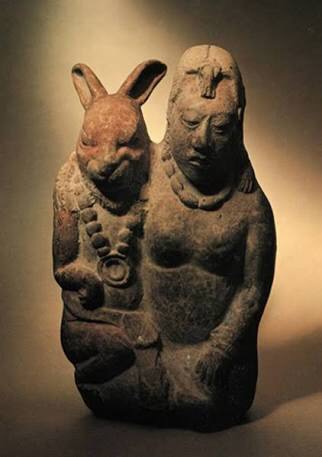
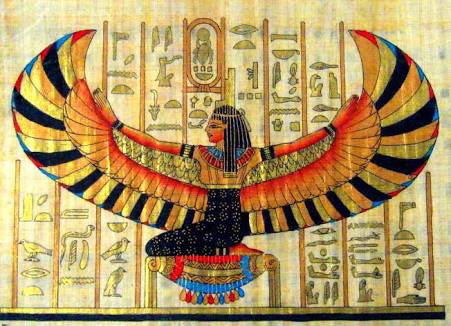
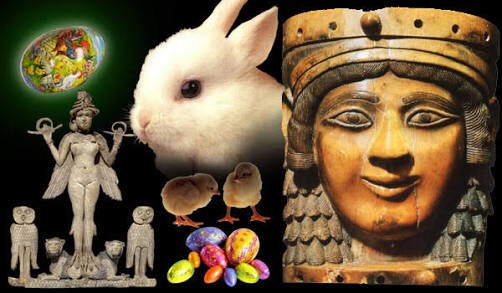





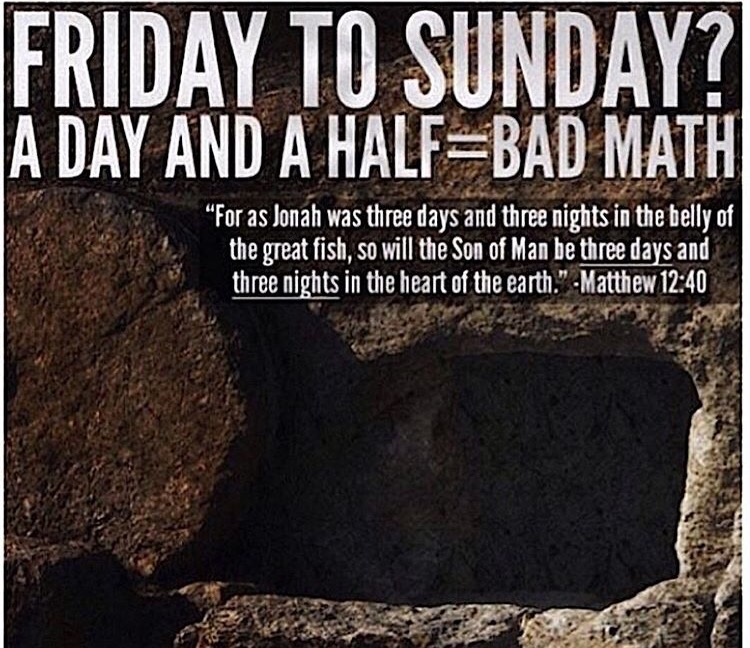
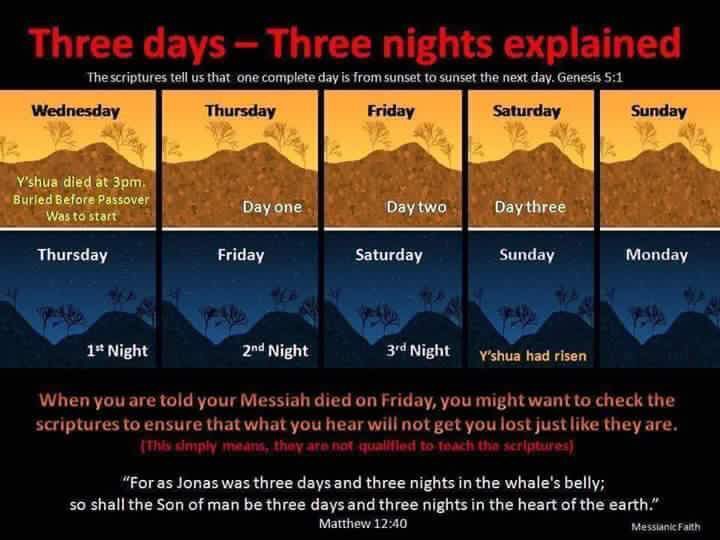

More Stories
PANDEMIC UPDATE: ISRAEL, THE CHURCH OF JESUS!
The Mark of The Beast
Pope prepares for Mark of the Beast with consideration of ‘universal basic wage’